
Managing multiple stores efficiently requires a centralized inventory system to synchronize stock levels, prevent discrepancies, and streamline operations across locations. This guide explores challenges in multi-store inventory management and practical solutions, including OrderStock Pro’s centralized dashboard, to help growing businesses scale seamlessly.
For retailers and chains expanding beyond a single location, inventory management transforms from a simple task into a complex orchestration. Coordinating stock across stores means avoiding overstock in one outlet while another faces shortages, all while handling diverse suppliers and fluctuating demands. Without a unified system, this can lead to lost sales, increased costs, and operational silos that hinder growth.
This article breaks down the key challenges of multi-store setups and provides actionable strategies to overcome them. We’ll focus on tools that centralize control, making it easier for business owners to monitor and optimize inventory in real time. OrderStock Pro, a powerful SaaS solution available via subscription on tulipwork, stands out with its multi-store capabilities designed for businesses ready to scale.
Key Challenges in Multi-Store Inventory Management
Scaling to multiple locations introduces hurdles that single-store operations rarely face. Identifying these is crucial for implementing effective solutions:
- Stock Synchronization: Real-time discrepancies between stores can cause overselling or excess inventory, complicating transfers and reporting.
- Order Fragmentation: Placing separate orders per store leads to inefficiency, higher supplier costs, and inconsistent pricing.
- Supplier and Product Complexity: Managing varied suppliers across locations, especially with multiple options per product, demands flexible assignment.
- Reporting and Visibility: Gaining a holistic view of stock, costs, and trends across sites is tough without centralized data.
- Team Coordination: Delegating tasks securely among store managers while maintaining oversight requires robust permissions.
- Scalability Bottlenecks: As stores grow, manual processes become unsustainable, risking errors and delays.
These issues can erode profits—studies indicate multi-location businesses lose up to 15% of revenue to inventory mismanagement—but a unified system can turn them into competitive advantages.
Strategies for Effective Multi-Store Inventory Control
Adopt these proven approaches to unify your operations. Prioritize centralization and automation for maximum impact.
1. Centralize Stock Tracking Across Locations
A single dashboard for all stores ensures visibility and accuracy, eliminating guesswork.
- Tip: Assign products to specific stores and update levels in real time, using mobile access for on-site adjustments. Track by category or location to spot imbalances quickly.
- How OrderStock Helps: OrderStock Pro’s Multi-Store Mastery provides centralized stock tracking from one dashboard, with effortless updates via a mobile-ready interface. This keeps all locations aligned without manual reconciliation.
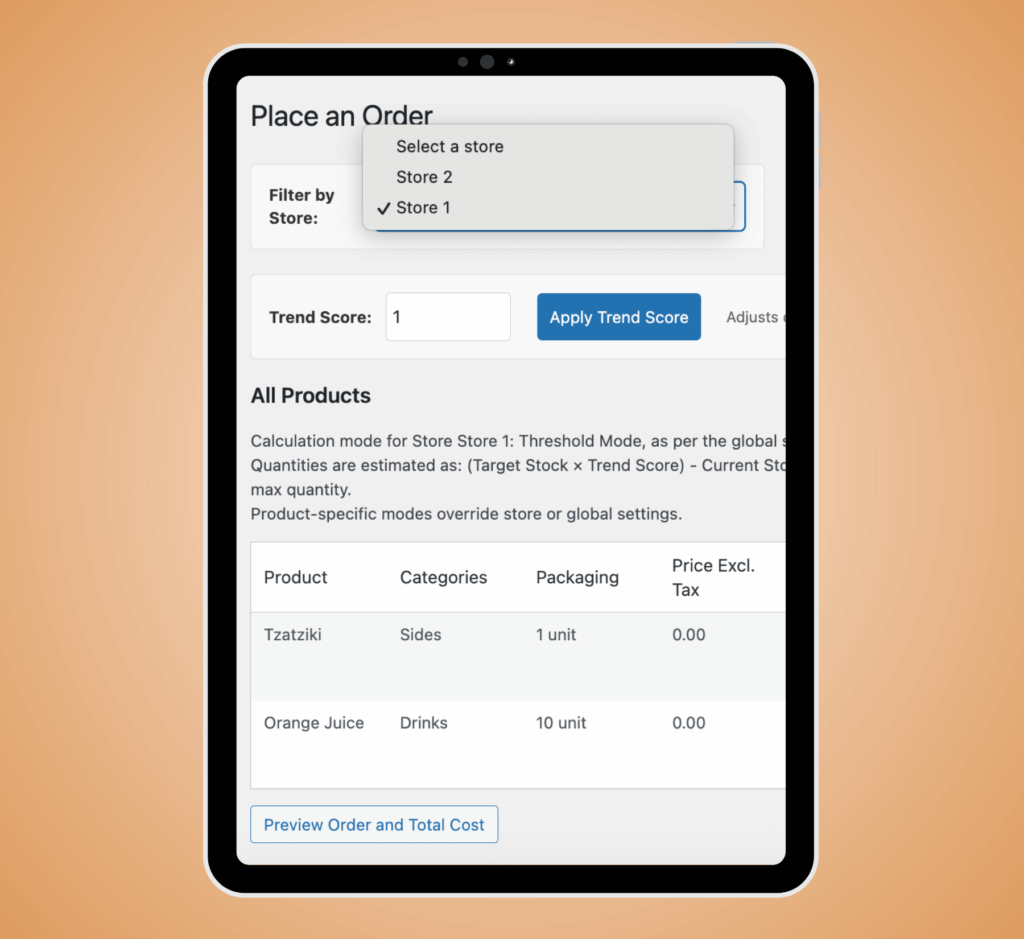
2. Consolidate Orders for Efficiency
Merge orders from multiple stores to negotiate better terms and reduce administrative overhead.
- Tip: Filter products by store and supplier, then combine into unified prep lists for warehouses or central kitchens. Respect minimum thresholds and maximum limits to optimize quantities.
- How OrderStock Helps: OrderStock Pro’s Order Consolidation combines orders into a single list, ideal for multi-store setups. Central Kitchen Magic streamlines distribution from a main hub, while one-click PDF generation handles professional supplier communications.

3. Leverage Smart Forecasting Per Location
Tailor predictions to each store’s unique sales patterns, adjusting for regional trends.
- Tip: Use forecast or threshold modes, incorporating trend scores to refine suggestions. Set decimal precision for location-specific needs, like bulk items in larger stores.
- How OrderStock Helps: OrderStock’s Smart Order Suggestions apply Forecast Mode or Threshold Mode across stores, delivering location-aware quantities with Trend Score adjustments—ensuring balanced replenishment without overordering.
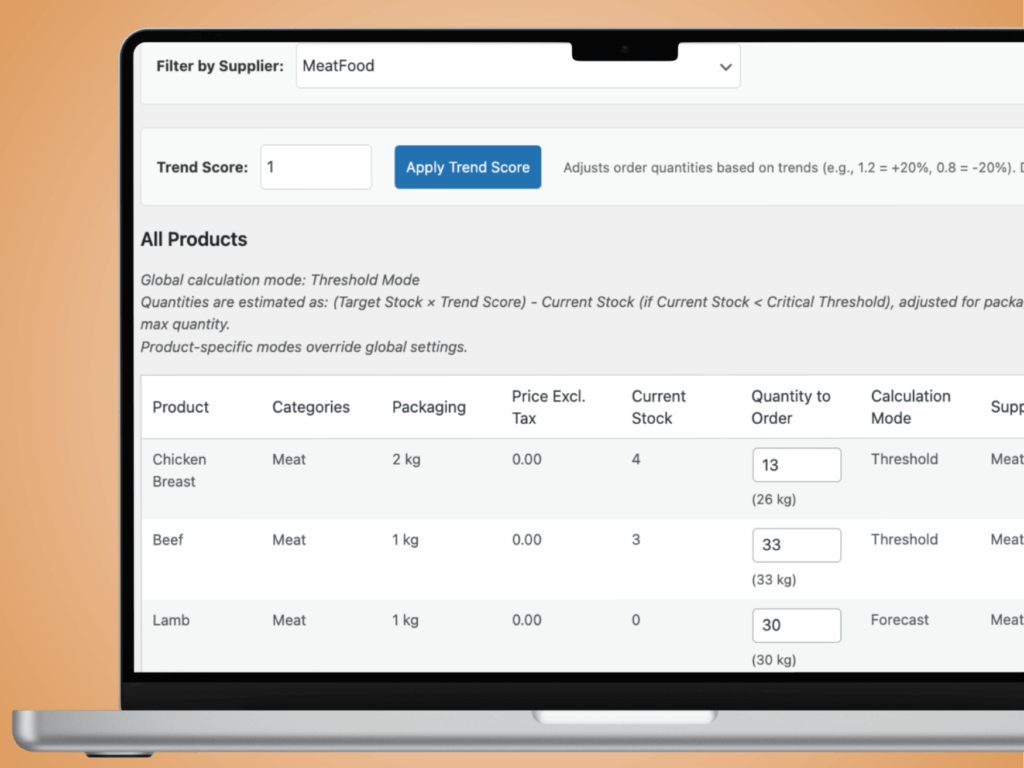
4. Assign Multiple Suppliers Flexibly
Diversify sourcing to mitigate risks and adapt to store-specific availability.
- Tip: Link several suppliers per product, filtering by location for targeted orders. Bulk-assign to streamline setup for new stores.
- How OrderStock Helps: OrderStock Pro supports Multiple Suppliers per product, with Bulk Editing Power for quick assignments across locations. Supplier Simplicity makes filtering effortless, enhancing resilience in multi-store networks.
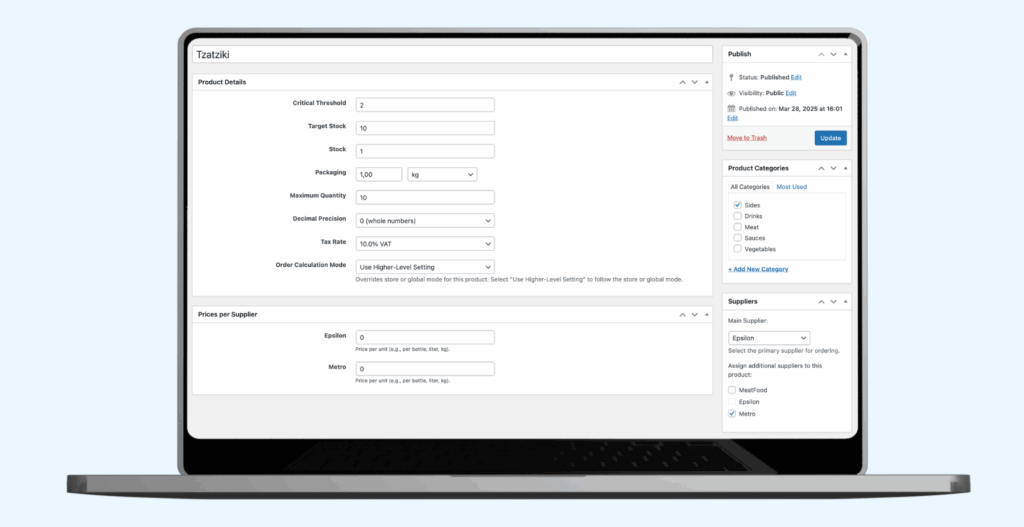
5. Generate Insights with Advanced Reporting
Holistic analytics reveal performance gaps and opportunities across your chain.
- Tip: Capture snapshots for audits, track order history by store, and analyze costs by period or supplier to inform decisions.
- How OrderStock Helps: OrderStock Pro’s Insightful Reports offer advanced analytics and real-time cost tracking filtered by store. Inventory Snapshots enable PDF/CSV exports for comprehensive audits, providing the visibility multi-store managers need.
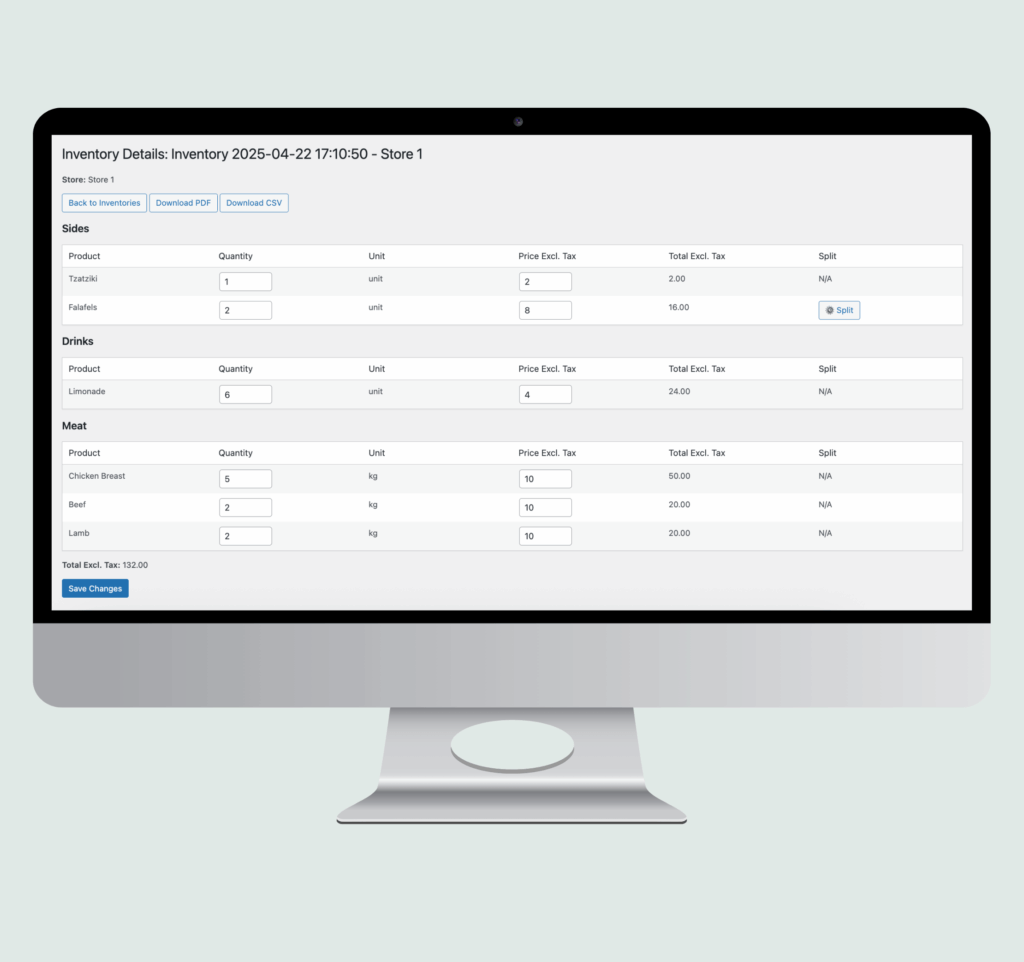
6. Secure Team Delegation with Custom Roles
Empower local teams while retaining central control to maintain consistency.
- Tip: Define roles like store-level editors or chain-wide managers, ensuring secure access to relevant data only.
- How OrderStock Helps: OrderStock Pro’s Team Permissions allow adding users with custom roles, facilitating secure task delegation across multiple stores without compromising oversight.
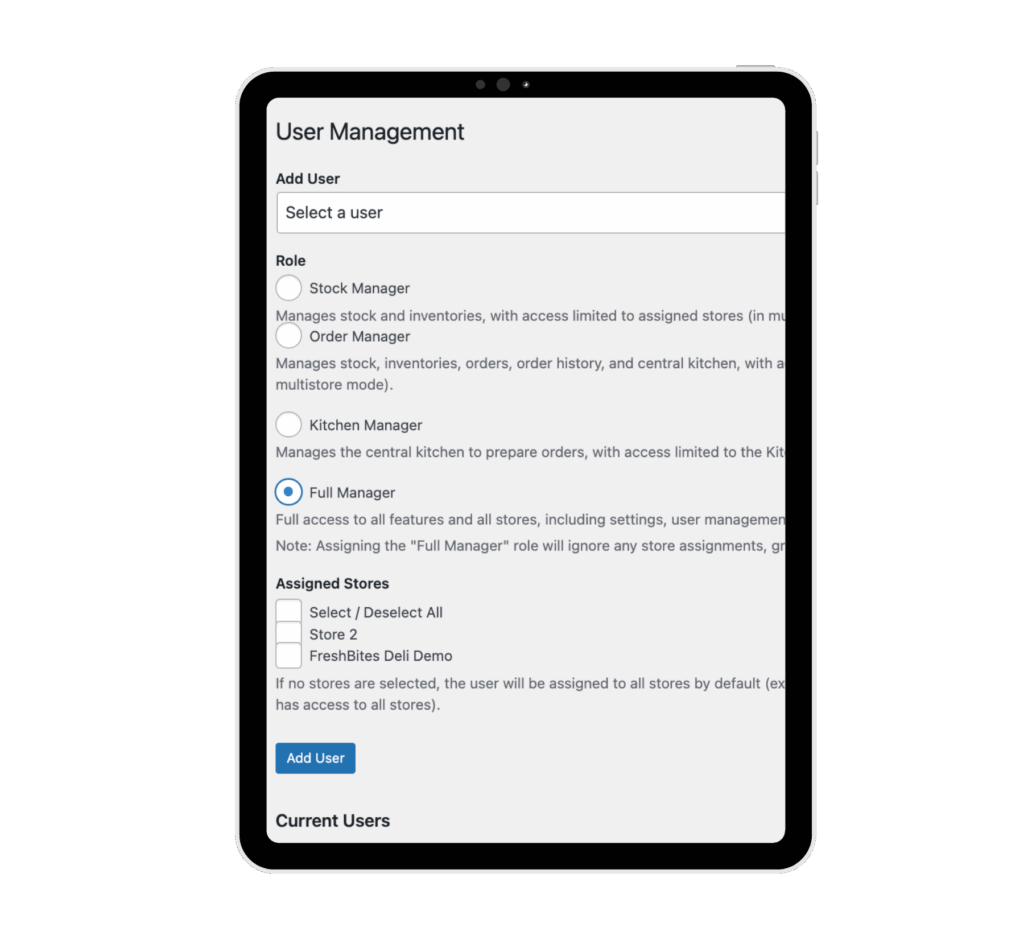
7. Streamline Data Management with Imports and Exports
Handle expansions or updates efficiently with bulk tools.
- Tip: Use CSV for transferring product data between stores or during onboarding new locations.
- How OrderStock Helps: OrderStock Pro’s Import/Export Made Easy supports seamless CSV handling, paired with Order History & Reception for tracking receptions and statuses across sites.

The Business Impact of Unified Multi-Store Management
Businesses using centralized systems report 25-40% improvements in inventory accuracy and cost savings through reduced waste and better supplier terms. For growing chains, this translates to faster scaling and higher margins.
OrderStock Pro’s subscription on tulipwork delivers these benefits with scalable features, starting from core tracking and expanding to full multi-store mastery.
Conclusion: Unify Your Multi-Store Inventory for Growth
Overcoming multi-store challenges starts with a centralized system that synchronizes stock, consolidates orders, and empowers your team. OrderStock Pro makes it straightforward, helping businesses expand confidently.
Ready to centralize your operations? Subscribe to OrderStock on tulipwork today!
